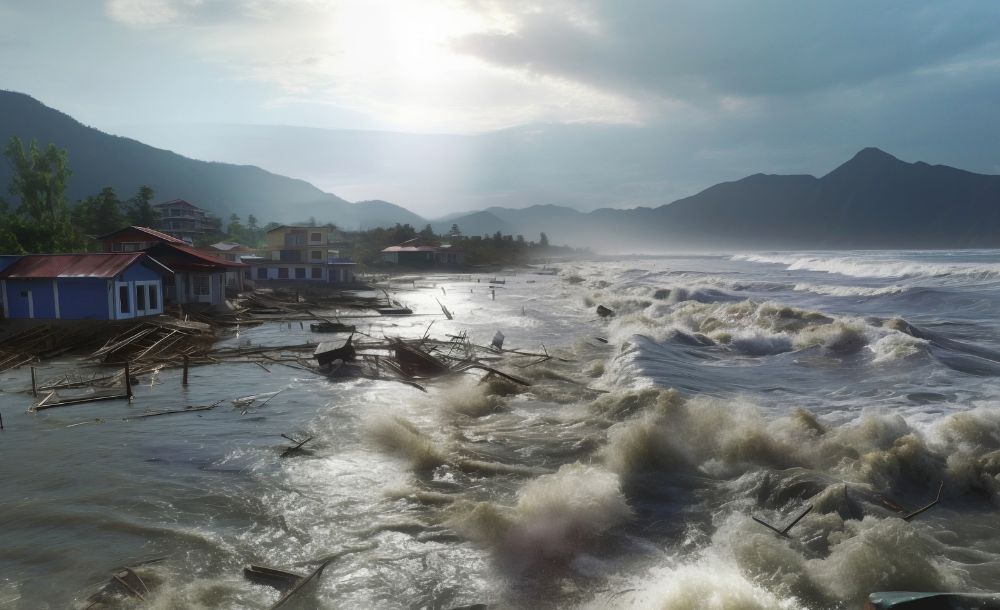On the quiet morning of December 26, 2004, the city of Chennai woke to a horrifying disaster that no one saw coming. The 2004 tsunami Chennai experienced was not just another storm or coastal floodit was a once-in-a-lifetime catastrophe. Triggered by a massive 9.1-magnitude undersea earthquake near the coast of Sumatra, Indonesia, this natural disaster sent powerful waves racing across the Indian Ocean at jet-like speeds. Within hours, those waves slammed into the eastern coastline of India, including the shores of Chennai, leaving behind destruction that would scar the city’s memory forever.
How the 2004 Tsunami Hit Chennai?
The 2004 tsunami Chennai faced came with no warning. Giant waves, some over 30 feet tall, suddenly crashed onto the beaches and fishing villages. Marina Beach, usually filled with early morning walkers and children playing, turned into a scene of chaos. The water came in fast, strong, and unforgiving. Hundreds were swept away before they could even react. Most residents, especially in coastal communities, had never heard the word “tsunami” before, let alone imagined such an event could reach them. This lack of awareness and absence of a warning system made the 2004 tsunami Chennai endured especially deadly.
Devastation Across the City
The destruction caused by the 2004 tsunami Chennai was widespread and heartbreaking. Over 200 people in Chennai lost their lives that day, with thousands more injured or left homeless. Fishing communities along the coast, such as Foreshore Estate, Nochikuppam, and Kasimedu, were hit the hardest. Boats were destroyed, homes reduced to rubble, and entire neighborhoods flooded. The stench of saltwater and debris lingered for days as families searched for loved ones and tried to recover the bodies of those who didn’t survive. Hospitals in Chennai were overwhelmed with the injured, and schools were converted into temporary shelters for displaced residents.
Fishermen and Coastal Families Suffer Most
For many in Chennai, especially those in the fishing community, the 2004 tsunami Chennai experienced was not just a natural disasterit was the loss of a way of life. Boats, fishing gear, and nets were washed away, taking with them the only source of income for thousands of families. These communities, already living in vulnerable conditions, were left with nothing. The ocean that once provided their livelihood became the very force that took everything from them. Many survivors reported that the sea receded strangely before the waves came crashing back ina warning sign that went tragically unrecognized.
Children Among the Victims
One of the most heart-wrenching aspects of the 2004 tsunami Chennai tragedy was the number of children who lost their lives. It was a Sunday morning, and many children were playing near the beach or attending Sunday classes. The powerful waves arrived without any signal or alert, catching everyone off guard. Schools near the coastline reported dozens of student deaths, and several families were completely torn apart. In some cases, only one or two members of a large family survived. This massive loss deeply impacted Chennai’s collective psyche, especially in local schools and coastal neighborhoods.
Government Response and Relief Work
In the immediate aftermath of the 2004 tsunami Chennai witnessed, the government acted quickly to launch rescue and relief operations. Army, Navy, police, and numerous NGOs worked round the clock to rescue trapped people, distribute food, and provide emergency medical aid. Relief camps were established across the city, offering shelter, blankets, food, and basic healthcare. However, the scale of the disaster made it extremely challenging to reach every affected person in time. Over the next few months, relief efforts expanded to include rebuilding homes and rehabilitating victims, particularly in fishing villages and slum areas.
Lack of Early Warning System Exposed
One of the main reasons the 2004 tsunami Chennai suffered was so deadly is that there was no tsunami warning system in place in India at the time. The Indian Ocean had never experienced a tsunami of this magnitude in modern history, and thus the country was completely unprepared. After the disaster, the Indian government took immediate steps to establish a Tsunami Early Warning Centre and began working on public awareness campaigns. This tragedy taught Chennai and the rest of the country a painful lessonnatural disasters may strike without notice, but preparedness can save lives.
Media Coverage and Global Attention
The 2004 tsunami Chennai experienced drew national and international media attention. Television screens were filled with images of flooded homes, mass funerals, and crying children. The global response was massive, with aid and donations pouring in from around the world. Celebrities, world leaders, and NGOs turned their eyes toward Chennai and other affected regions, providing both financial help and technical expertise. The world stood with Chennai during its darkest hour, and this solidarity helped the city take its first steps toward healing and rebuilding.
Long-Term Impact on Chennai’s Urban Planning
In the years following the 2004 tsunami Chennai underwent significant changes in urban planning and coastal development. The city started constructing stronger sea walls, improved drainage systems, and regulated coastal construction more strictly. Fishing villages were relocated to safer zones, and emergency evacuation drills became more common. Awareness campaigns and disaster preparedness programs were introduced in schools and public institutions. The 2004 tsunami Chennai endured reshaped how the city viewed coastal safety, and the disaster served as a turning point in how authorities handled risk management.
Memorials and Annual Remembrance
Every year on December 26th, Chennai pauses to remember the lives lost to the 2004 tsunami. Churches, temples, and public organizations hold memorial services. Family members gather at Marina Beach, lighting candles and offering prayers. In many fishing villages, emotional tributes are held where survivors share their stories. These events serve as powerful reminders of what was lost and highlight the strength and resilience of the people of Chennai. The 2004 tsunami Chennai endured remains a chapter of deep sorrow but also a testament to the city’s ability to recover and move forward.
Psychological Trauma and Community Healing
Beyond the physical damage, the emotional scars left by the 2004 tsunami Chennai witnessed were long-lasting. Many survivors dealt with trauma, nightmares, and fear of the sea. Children who witnessed the devastation required counseling and therapy. NGOs played a crucial role in helping people cope through community programs, art therapy, and group counseling. Over time, Chennai began to heal, but for many families, the pain still lingers. The event changed how people in the city related to natureit brought respect, fear, and an understanding of how powerful and unpredictable it can be.
Conclusion
The 2004 tsunami Chennai faced was not just a natural disasterit was a life-altering event for thousands of families. It exposed vulnerabilities, but it also revealed the resilience of the people. From tragedy emerged strength. Chennai rose from the wreckage with better systems, stronger communities, and a deeper awareness of disaster preparedness. Today, when people talk about the 2004 tsunami Chennai survived, they speak not only of loss but of courage, unity, and the will to rebuild. The lessons learned continue to guide the city, ensuring that Chennai is never caught so unprepared again.
FAQs
What caused the 2004 tsunami Chennai experienced?
It was triggered by a 9.1-magnitude undersea earthquake near Sumatra, Indonesia, which sent massive waves across the Indian Ocean.
How many people died in the 2004 tsunami in Chennai?
Over 200 people were killed in Chennai, with thousands more affected across Tamil Nadu.
Why was there no warning for the 2004 tsunami Chennai faced?
At the time, India did not have a tsunami warning system in place. The Indian Ocean was not known for tsunamis, making this event unprecedented.
What areas in Chennai were most affected by the tsunami?
Coastal neighborhoods like Marina Beach, Foreshore Estate, Nochikuppam, and Kasimedu suffered the most damage.
What has Chennai done since the 2004 tsunami to improve safety?
Chennai has implemented a tsunami warning system, built stronger coastal defenses, and increased public awareness about disaster preparedness.







